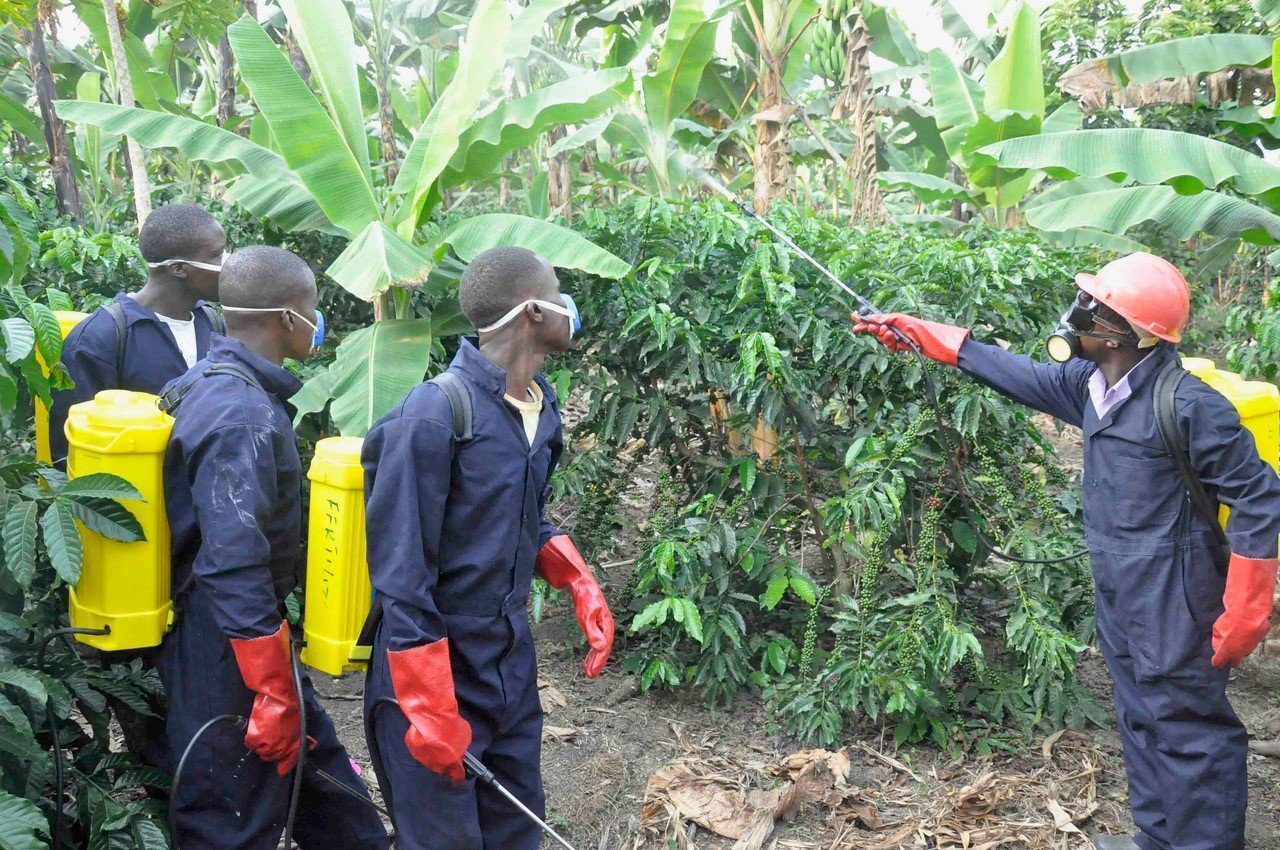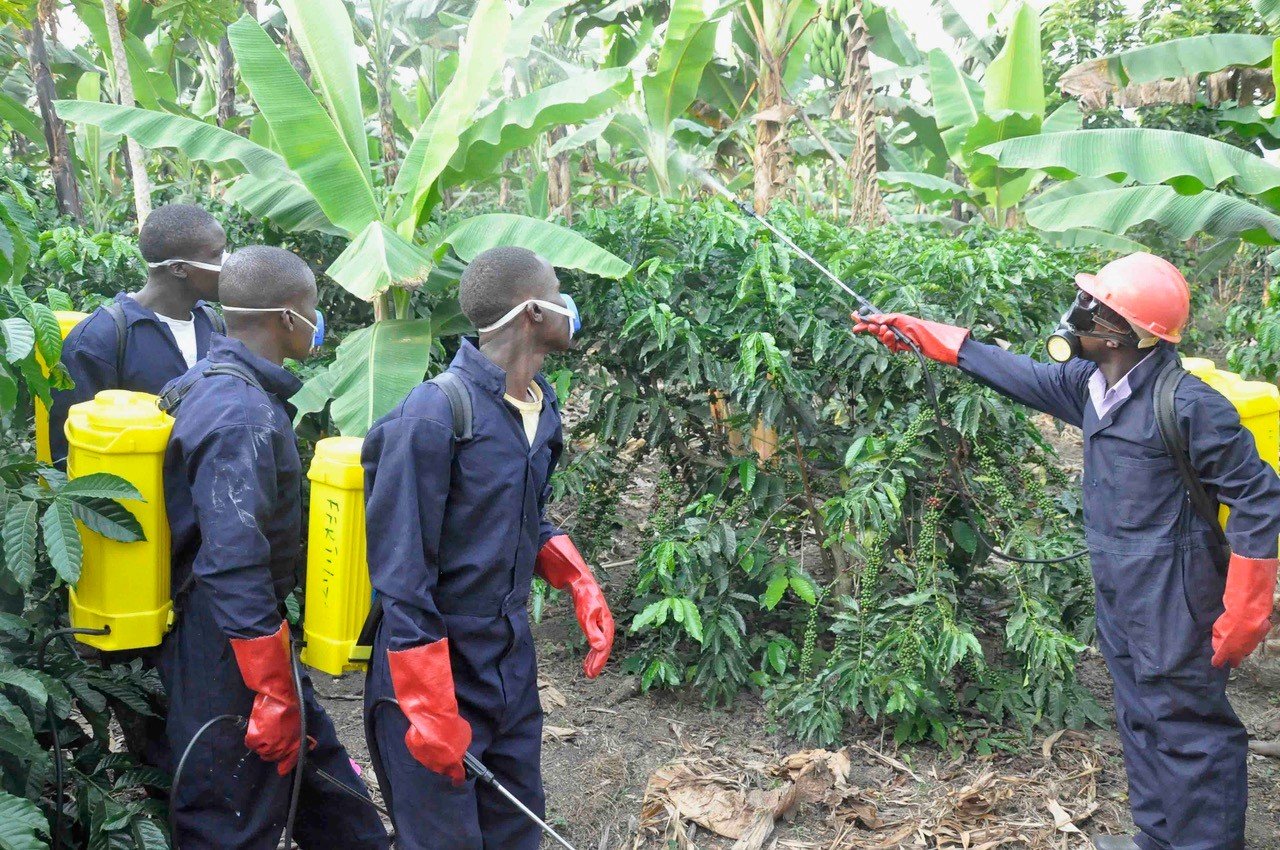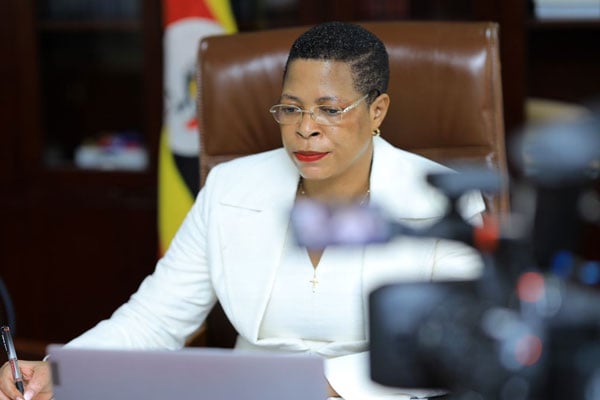Mindset change is crucial for the parish devt model

Extension workers spraying crops recently. PHOTO/ FILE
What you need to know:
A sneak peek into some government projects shows mammoth achievements that could have by now uplifted Uganda out of poverty had the beneficiaries’ mindsets been tickled during previous interventions
The parish development model (PDM) is now the government’s new kid on the block joining several other initiatives to fight household poverty and cruise Uganda to middle income status by 2040.
Before the launch of PDM last July, government had been tackling poverty through numerous programmes such as; National Agricultural Advisory Services (NAADS), Northern Uganda Social Action Fund (NUSAF), Operation Wealth Creation (OWC) and recent ones like; Development Initiative for Northern Uganda (DINU); Development Response to Displacement Impacts Project (DRDIP), all guided by the National Development Plan III (NDPIII).
PDM is, therefore, a hybrid government weapon joining the above projects to ignite economic growth through a multifaceted approach whose journey starts from the parish level so that villages and households are easily tapped in.
As we already know, the PDM methodology is anchored on seven strategic pillars: 1) Production, Storage, Processing and Marketing; 2) Infrastructure and Economic Services; 3) Financial Inclusion; 4) Social Services; 5) Mindset change; 6) Parish Based Management Information System 7) Governance and Administration.
Of the seven pillars; mindset change is to me the foundation that if well executed could easily springboard Uganda to middle income status even before the 2040 stretch. For starters, most - if not all government implemented projects - have been delivering massive outputs in order to change lives of Ugandans, however, these yields dissipate off as soon as the projects close. The reason is quite simple - peoples’ attitudes ought to be developed concurrently with project execution so that they can own these projects and continue building on the knowledge, infrastructure, and related project outcomes.
A sneak peek into some government projects shows mammoth achievements that could have by now uplifted Uganda out of poverty had the beneficiaries’ mindsets been tickled during previous interventions.
According to a NAADS performance report of 2020, the programme supported food security interventions through procurement and distribution of 2,434,437 tonnes of maize seeds to 125 districts enabling 121,722 households to benefit directly within the 2019-2020 financial year alone. NAADS further initiated a tractorisation programme where 560 tractor operators across the country were trained on proper operation and maintenance of tractors, procured and distributed 280 tractors to beneficiary groups in 119 districts. NAADS gave out several agricultural inputs such as maize mills, fruit processing facilities etc. These tangible and visible interventions were aimed at empowering citizens and enabling them take off and grow independently.
These government interventions were capable of sustainably uplifting most Ugandans out of poverty if they had an effective integration of mindset change approaches. A well-developed mindset empowers beneficiaries to keep hold on project achievements and carry on even without government or donor support.
The unwanted reality on the ground to demonstrate mindset gap is that communities keep referring to their sub projects by the name of the funder. For instance; NUSAF garden; DINU road; NAADS’ goats; DRDIP schools, etc. They simply disassociate themselves from such initiatives as if it’s not meant for them.
These misconceptions are equally exacerbated by prevailing social cultural believes and norms in our communities. Some cultures forbid women from eating certain nutritious foods for unclear, unscientific reasons.
The prevalence of these myths and misconceptions pose critical barriers to projects’ desired changes and affect sustainability efforts. Thus, an overarching Social Behavioral Change Communications (SBCC) strategy based on formative research is necessary to ascertain existing barriers for the implementation of the mindset change aspect under the PDM.
The probable SBCC theory to guide community mindset change would be the Social Ecological Model which advises on how to tackle behavioral issues both for community and individuals, but this ought to be well informed by preliminary formative research in the different communities.
Robert Emmanuel Owiny, Project Communications Assistant for DRDIP at the Office of The Prime Minister.



